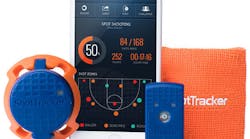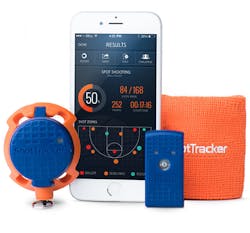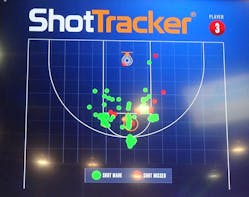This file type includes high-resolution graphics and schematics when applicable.
The Internet of Things (IoT) may be hype to some, but there is a host of products using wireless communication and various sensors to create some interesting IoT-related products. Typically the sensors include things like accelerometers—magnetic and gyroscopic sensors also found in smartphones—but many other types of sensors are available. DecaWave’s indoor positioning system is one of these.
DecaWave’s ultra-wide band position sensing technology is based on the IEEE802.15.4-2011 standard. The technology is employed in the ShotTracker (Fig. 1). The start kit comes with a a small tag on each player’s shoe and the ShotTracker-enabled Spalding basketball connects with portable sensors placed around the court. The software generates a real-time shot chart for each player and automatically tracks other metrics such as possession, passes, assists and turnovers. This platform is designed for individual use. The wrist sensor slips into a wrist band. The position information is relative to the wrist sensor and the net sensor. The latter communicates with the smartphone application. The net sensor also has a three-axis accelerometer allowing it to determine rim bounces and baskets.
DecaWave’s DW1000 is another single-chip indoor-positioning solution (IPS). It can provide position information to within 10 cm.
The team demo at the 2016 Consumer Electronics Show (CES) was a bit more ambitious and used a different set of sensors but the same basic technology. The basketball court was ringed with sensors and a sensor is built into the basketballs used on the court. This allowed the ball to be tracked.
College basketball players typically shoot over 1,000 shots per day in practice. The information provided just by ShotTracker positioning sensors lets players and coaches see how a player is progressing and where improvements can be made (Fig. 2).
DecaWave’s technology provides accuracy measured in centimeters while the Bluetooth positioning standard is on the order of meters. Bluetooth is more useful for general proximity and Bluetooth beacon technology is being employed in retail advertisements.
Positioning and context information is becoming more important and accessible to designers. There are a number of applications, from factory automation to smart buildings, that can take advantage of IPS and IoT.



